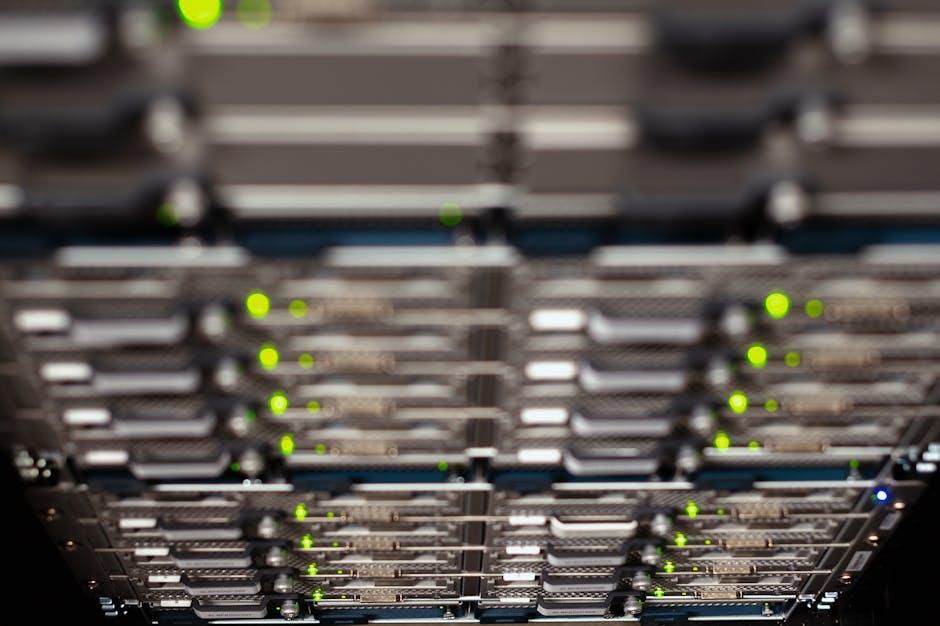In today’s digital age, the seamless streaming of videos, music, and other media content has become an expectation rather than a luxury. Yet, the frustrating phenomenon of buffering continues to disrupt user experiences, prompting questions about its underlying causes. Is buffering primarily a result of device limitations, or does it stem from network issues? Understanding the root of buffering is crucial for both consumers and service providers seeking to enhance digital performance and user satisfaction. This article aims to dissect the technical intricacies of buffering, examining the roles of both hardware capabilities and network conditions in this common digital disruption. By exploring these factors, readers will gain a clearer understanding of how to mitigate buffering and improve their streaming experiences.
Understanding the Root Causes of Buffering
Buffering, a common digital hiccup, can arise from a variety of underlying factors. One primary cause is network bandwidth limitations. When streaming media, your device needs to receive data at a consistent rate. If the available bandwidth is insufficient, buffering occurs as the device pauses to gather enough data to continue playback smoothly. This is often due to:
- High network traffic, particularly during peak usage times.
- Multiple devices connected to the same network, each competing for bandwidth.
- Interference from physical obstacles or electronic devices.
On the other hand, device performance can also contribute to buffering issues. A device’s processing power, memory capacity, and storage can all impact its ability to handle data efficiently. This might include:
- Outdated hardware that struggles to keep up with high-resolution media.
- Insufficient RAM causing delays in processing data.
- Background applications consuming resources needed for streaming.
In essence, understanding whether buffering is due to network issues or device limitations requires examining both the network environment and the device capabilities. Addressing these areas can significantly reduce or eliminate buffering interruptions, enhancing the overall streaming experience.

Evaluating Device Capabilities and Their Impact on Streaming
When delving into the intricacies of streaming performance, it’s crucial to examine how the capabilities of your device can influence the experience. Devices with limited processing power and insufficient RAM may struggle to handle high-definition video, leading to frequent buffering. Additionally, outdated hardware might not support the latest streaming codecs, further hampering performance. Aspects like screen resolution and refresh rate also play a pivotal role; a device unable to match the content’s specifications might downscale the video quality, affecting overall enjoyment.
- Processing Power: Ensure your device’s CPU and GPU can handle the streaming service’s requirements.
- Memory Capacity: Adequate RAM is essential for smooth streaming without interruptions.
- Codec Support: Check for compatibility with the latest video codecs to optimize performance.
- Screen Specifications: Align your device’s display capabilities with the content’s quality for the best experience.
In essence, while network issues often bear the brunt of blame for buffering, device limitations can equally contribute to streaming inefficiencies. Regular updates and hardware checks can mitigate these issues, ensuring your device is fully equipped to deliver seamless content.

Analyzing Network Performance and Its Role in Buffering
Understanding the intricacies of network performance is essential when examining the causes of buffering. At the core, network performance is determined by several key factors, including bandwidth, latency, and packet loss. Bandwidth refers to the maximum rate of data transfer across a network path, while latency is the delay before a transfer of data begins following an instruction for its transfer. Packet loss occurs when data packets traveling across a network fail to reach their destination, which can severely impact streaming quality and lead to buffering.
- Bandwidth Limitations: Insufficient bandwidth can cause significant buffering, as the data stream cannot keep up with the playback speed.
- High Latency: Increased latency can delay data delivery, causing interruptions and buffering in real-time streaming.
- Packet Loss: Missing data packets mean that video streams have to pause to request the missing information, leading to buffering.
Network congestion, outdated hardware, or inefficient routing protocols can exacerbate these issues, resulting in a frustrating user experience. Identifying and optimizing these elements is crucial for minimizing buffering and enhancing overall streaming performance.

Practical Solutions to Minimize Buffering in Streaming Services
Addressing buffering issues effectively requires a combination of strategic adjustments to both your device and network. Here are some practical solutions to consider:
- Optimize Your Internet Connection: Start by ensuring your internet speed is sufficient for streaming. Consider upgrading your internet plan if necessary, and always use a wired connection when possible, as it provides a more stable and faster connection compared to Wi-Fi.
- Adjust Streaming Quality: Lowering the streaming quality can significantly reduce buffering. Most streaming services allow you to adjust video quality settings. Choose a lower resolution if buffering persists.
- Update Software and Hardware: Ensure that your device’s operating system and streaming apps are up to date. Outdated software can hinder performance and cause buffering.
- Limit Background Usage: Close any unnecessary applications or browser tabs that may be consuming bandwidth. Additionally, pause any ongoing downloads or uploads.
- Utilize Quality of Service (QoS): If your router supports it, configure QoS settings to prioritize streaming traffic over other types of internet usage. This can help reduce buffering during peak times.
Implementing these solutions can help enhance your streaming experience by reducing buffering instances, thus allowing for smoother playback and less frustration.







































